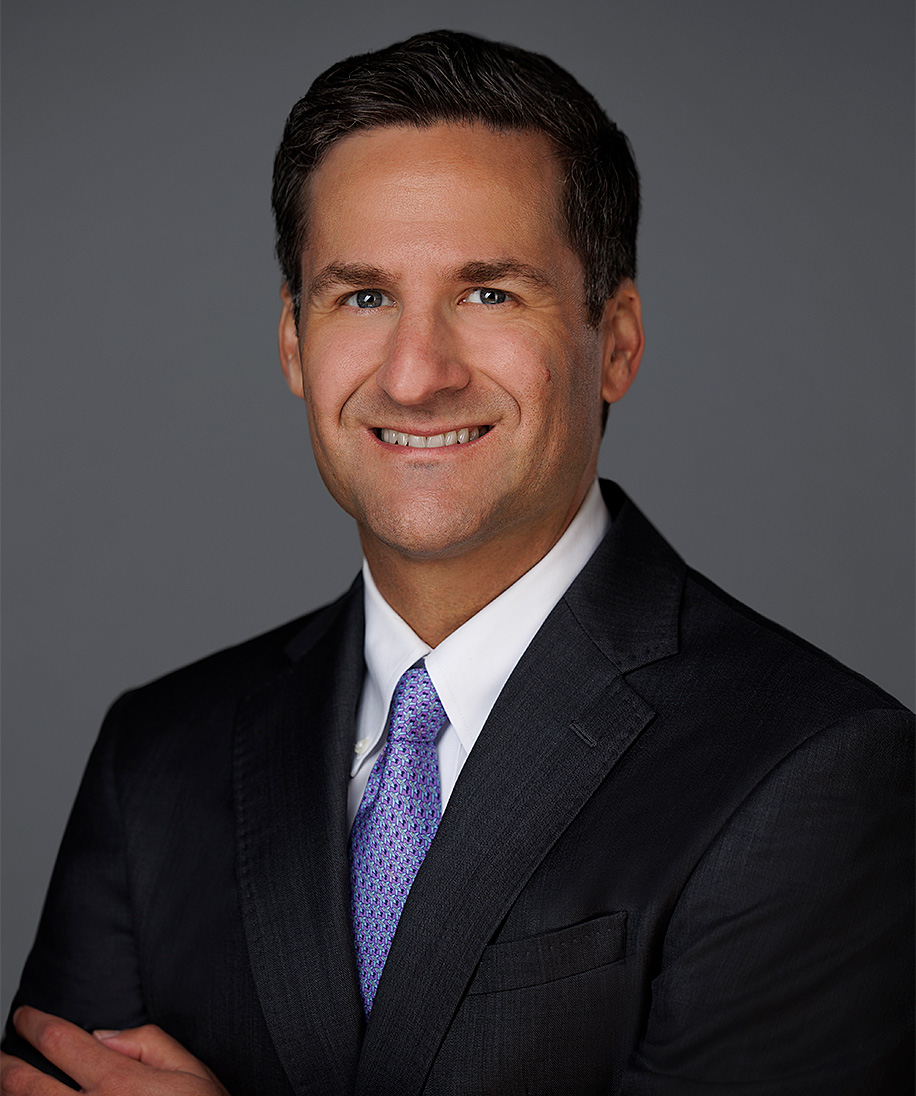Crypto Policy Tracker
Choke Point 2.0 & Staff Accounting Bulletin 121
December 13, 2024
By Chris Daniel, Eric C. Sibbitt, Dana V. Syracuse, Josh Boehm, Meagan E. Griffin, Lawrence D. Kaplan, Dina Ellis Rochkind, Jason Shafer and Lisa E. Rubin
A significant headwind for companies in the digital asset space is that they have reportedly struggled to secure and maintain relationships with banks, in what is now called “Choke Point 2.0.” With the incoming Trump Administration and the expectation that pro-crypto officials will assume key roles, we expect a shift in federal banking agencies’ formal regulatory policies and supervisory posture related to digital assets and banking. Key appointments at the Board of Governors of the Federal Reserve System (Federal Reserve), Office of the Comptroller of the Currency (OCC) and Federal Deposit Insurance Corporation (FDIC) (together, the federal banking agencies) are expected to establish a more collaborative relationship with the digital asset industry rather than exercise what has been perceived as an adversarial stance.
History of Operation Choke Point 1.0
Before the mid-1990s, bank supervision primarily centered on core banking safety and soundness aspects, such as capital, credit, and market risk. However, during this period, the OCC and the Federal Reserve began to implement new “risk-focused” supervisory frameworks including the examination for reputational risk.
Operation Choke Point 1.0 refers to the practice of “de-banking” or restricting banks from providing services to certain disfavored industries or people associated with such industries that occurred during the Obama Administration. Through informal guidance and pressure applied during confidential bank examinations, the federal banking agencies placed under increased scrutiny banks’ servicing of lawful, but politically controversial industries, such as payday lending, firearms, tobacco, and fossil fuels. The effect was that certain participants in these industries had their access to the banking system curtailed.
Operation Choke Point 2.0
Chokepoint 2.0 refers to federal banking agencies exerting informal pressure on banks to restrict services to industries or individuals deemed risky—most notably, the digital asset sector. Regulators have reportedly encouraged banks to sever ties with digital asset businesses, creating significant barriers to access banking services for the industry and for banks to engage in digital asset-related activities.
Under the first Trump Administration, the OCC published several pieces of regulatory guidance permitting national banks to engage in digital asset activities, including:
- OCC Interpretive Letter #1170 dated July 22, 2020, authorizing the provision of custody services for digital assets.
- OCC Interpretive Letter #1172 dated September 21, 2020, confirming the permissibility of holding stablecoin reserves.
- OCC Interpretive Letter #1174 dated January 4, 2021, permitting national banks to engage in node verification services.
However, under the Biden Administration, the OCC issued new guidance–OCC Interpretive Letter #1179–that confirmed the legal basis of such prior guidance but required national banks to obtain supervisory non-objection before engaging in digital asset activities.
- OCC Interpretive Letter #1179 dated November 18, 2021. The OCC concurred that digital asset-activities could be part of the “business of banking” as Letters 1170, 1172 and 1174 opined, but only if performed on a safe and sound basis and subject to supervisory review.
- We are not aware of any national banks that received a supervisory non-objection under the process required by Letter 1179.
The FDIC and Federal Reserve followed with guidance requiring prior notification of state non-member banks and state member banks engaging in digital asset activities.
- FDIC, FIL 16-2022, "Notification and Supervisory Feedback Procedures for FDIC-Supervised Institutions Engaging in Crypto-Related Activities," dated April 7, 2022.
- Federal Reserve, SR Letter 22-6 / CA 22-6: "Engagement in Crypto-Asset-Related Activities by Federal Reserve-Supervised Banking Organizations," dated August 16, 2022, applicable to state member banks as well as entities regulated as bank holding companies.
In 2023, the federal banking agencies, acting together to avoid regulatory arbitrage, issued several public statements highlighting the risks associated with digital assets and providing guidance to banking organizations. These communications aimed to ensure that banks are aware of potential challenges and manage associated risks effectively. Notably, these statements articulated the agencies’ view that certain digital asset activities were highly unlikely to obtain supervisory non-objection, including issuing tokenized assets (such as stablecoins) on a public blockchain.
- The federal banking agencies issued a "Joint Statement on Crypto-Asset Risks to Banking Organizations" dated January 3, 2023.
- The statement outlined key risks related to digital assets, including fraud, legal uncertainties, misleading representations, volatility and susceptibility to money laundering and terrorist financing. It emphasized the importance of robust risk management and informed decision-making when engaging with digital-asset-related activities.
- The joint statement provided: “Based on the agencies’ current understanding and experience to date, the agencies believe that issuing or holding as principal crypto-assets that are issued, stored, or transferred on an open, public and/or decentralized network, or similar system is highly likely to be inconsistent with safe and sound banking practices.”
- The federal banking agencies issued a "Joint Statement on Liquidity Risks Resulting from Crypto-Asset Market Vulnerabilities," dated February 23, 2023.
- This statement focused on liquidity risks stemming from certain funding sources tied to digital-asset-related entities. It reminded banking organizations to apply existing risk management principles to monitor and manage these liquidity risks effectively. The agencies clarified that they do not prohibit or discourage banks from providing services to any specific class or type of customer, as permitted by law or regulation.
Finally, the Federal Reserve established a novel activities supervision program for member banks and bank holding companies. In policy guidance to state member banks, the Federal Reserve also elaborated on its presumption that certain digital asset activities were impermissible to conduct.
- Federal Reserve: "Policy Statement on Policy Statement on Section 9(13) of the Federal Reserve Act," dated February 7, 2023.
- This is one of the few documents in which a federal banking agency expressly stated that certain activities would be presumptively denied. For example, the statement provided: “The Board has not identified any authority permitting national banks to hold most crypto-assets, including bitcoin and ether, as principal in any amount, and there is no federal statute or rule expressly permitting state banks to hold crypto-assets as principal. Therefore, the Board would presumptively prohibit state member banks from engaging in such activity under section 9(13) of the Act.”
- Federal Reserve SR 23-7: "Creation of Novel Activities Supervision Program," dated August 8, 2023.
- The letter stated: “Given the novelty of these activities, they may create unique questions around their permissibility, may not be sufficiently addressed by existing supervisory approaches, and may raise concerns for the broader financial system.”
Despite the absence of explicit prohibitions, this stream of regulatory guidance, coupled with reports that the federal regulatory agencies advised banks to avoid certain digital asset-related activities, discouraged banks from servicing digital asset businesses or engaging in digital asset-related activities. For example, materials revealed by a recent FOIA request indicate that the FDIC told banks to “pause” or “refrain from providing” or “not proceed” with offering digital asset banking services. These pause letters clearly noted that they were confidential supervisory information, thus preventing the recipient banks from publicly disclosing their receipt. While issued by the regional directors from multiple FDIC regions, the letters contain similar language, which suggests coordination across the agency, likely led by the FDIC’s headquarters in Washington, D.C.
Some members of Congress sent letters to the federal banking agencies expressing concern about these developments.
Staff Accounting Bulletin 121
Relevant to Operation Chokepoint 2.0, the Securities and Exchange Commission issued, without public input, Staff Accounting Bulletin 121 (17 CFR Part 211) (“SAB 121”), requiring publicly traded companies, including banks and banks holding companies, to treat digital assets held in custody as on-balance sheet assets. As banking organizations’ capital requirements are calculated based on their balance sheet assets, SAB 121 had the effect of immediately making the holding of digital assets unfeasible as additional capital was required to be held. Notwithstanding such public guidance, select traditional finance entities sought and received exemptions from SAB 121, creating an uneven playing field and frustrations by the lack of transparency of regulatory standards.
In October 2023, the U.S. Government Accountability Office (GAO) determined that SAB 121 qualified as a “rule” under the Congressional Review Act that should have been submitted to Congress for review. In May 2024, both the House and Senate voted to overturn SAB 121 under the Congressional Review Act on a bipartisan basis. In June, President Biden vetoed the resolution that left SAB 121 in place.
What Does It Mean Going Forward?
The 119th Congress is expected to be the most pro-crypto in history. President-elect Trump is signaling strong support for digital asset innovation by appointing pro-crypto officials to top positions in his administration.
- The venture investor David Sacks has been appointed as “White House A.I. and Crypto Czar.” Sacks is expected to make personnel selections and implement policies that will improve the crypto industry’s standing in the United States. It has been reported that an end to the debanking of crypto start-ups is near the top of the list. How Sacks plans to achieve this goal is unclear. However, having a role in the White House designated to focus on digital assets streamlines the process for developing policy by coordinating all the agencies/the entire executive branch.
- Changes at the top of the FDIC and OCC are expected to yield significant changes to banks’ engagement with crypto companies and digital asset activities. We are still awaiting appointment announcements at the OCC and FDIC.
- Federal Reserve Chair Jerome Powell and Vice Chair for Supervision Michael Barr remain as pivotal figures in shaping financial policy and are both largely insulated from political pressure due to the Federal Reserve’s independence. Powell noted on December 5, 2024, that bitcoin is “not a competitor for the dollar; it’s really a competitor for gold” at the New York Times’ DealBook summit. Similarly, Barr, who was appointed in 2022 for a four-year term as vice chair for supervision, cannot be removed without cause, ensuring continuity in regulatory oversight. However, it is possible that Barr resigns from his role as vice chair for supervision in light of the policy priorities of the new administration.
- On Wednesday, December 11, 2024, the Committee on Banking, Housing, and Urban Affairs held a hearing titled, “Consumer Protection: Protecting Workers’ Money and Fighting for the Dignity of Work.” CFPB Director Rohit Chopra was the sole witness at the hearing, and expressed concerns about debanking, such as under Operation Choke Point, from a consumer protection perspective.
- After Chairman Sherrod Brown’s (D-OH) postponement of the U.S. Senate Committee on Banking, Housing, and Urban Affairs markup vote on President Biden’s nominees, Senator Tim Scott (R-SC), the committee’s top Republican, made an opening statement. The senator called out the CFPB for ignoring his demands to pause rulemaking, even after prudential banking regulators agreed to shelve proposals and final rules before President Trump’s inauguration. He also stated that no legal business should ever be debanked.
Legislative, Regulatory and Executive Action Implications
- Legislation. The Financial Regulatory Accountability Act, spearheaded by Senator J.D. Vance, may serve as a model to address the de-banking issue. This bill proposes stricter oversight of regulatory practices, requiring agencies to justify their actions with transparent, objective standards rather than vague reputational concerns.
- The Financial Regulatory Accountability Act aims to establish a special inspector general within the Department of the Treasury. This office would oversee allegations of regulatory abuse and misconduct by financial regulators, particularly addressing concerns over the use of “reputational risk” to deny legal industries access to banking services.
- The legislation is supported by Senators Cynthia Lummis (R-WY) and Roger Marshall (R-KS), who co-sponsored the bill. They emphasize that federal regulators have misused their authority to advance specific policy agendas, and this act seeks to ensure ethical and apolitical oversight within the banking system.
- Legislation. Congressman French Hill (R-AK) has been selected to lead the House Financial Services Committee as its next chairman in the 119th Congress, following a decision by the House Republican Steering Committee. Hill has said he plans to address the issue in the next Congress. He chaired the Subcommittee on Digital Assets, Financial Technology and Inclusion and played a key role in advancing the FIT21 bill, serving as its lead sponsor.
- Congressman Andy Barr (R-KY) has also introduced The Fair Access to Banking Act. The legislation has strong support with 126 Republican cosponsors and places restrictions on certain financial services companies for debanking “lawful activities caused by a prejudice against or dislike for a person or the business of the customer, products or services sold by the person, or favoritism for market alternatives to the business of the person.” Senator Kevin Cramer (R-ND) has introduced companion legislation in the Senate. The legislation has 36 Republican cosponsors.
- Regulation. A new comptroller of the currency and new FDIC Chair may reinvigorate the “Fair Access Rule” first proposed by the OCC under Acting Comptroller Brian Brooks. The rule would provide banks with guidelines to ensure decisions about offering services are based on quantifiable risk, not political preferences.
- The Fair Access Rule aimed to ensure that large banks provide financial services based on:
- objective, quantitative risk assessments rather than subjective or reputational considerations;
- promoting fairness in the financial system by requiring banks to evaluate clients based on individual risk rather than entire categories of industries; and
- ensuring that lawful businesses like firearms manufacturers, fossil fuel companies, and crypto firms could not be denied access to financial services due to reputational concerns.
- While finalized in January 2021, during the final days of the Trump Administration, the Biden Administration paused its implementation indefinitely, leaving the rule unenforced.
- The Fair Access Rule is a key policy tool in discussions about Operation Choke Point 2.0, as it addressed concerns about “de-banking” practices targeting specific industries, including digital assets.
- Proponents argue that reinstating or revising the rule could protect lawful businesses from unfair treatment by financial institutions, while critics worry it could limit banks’ discretion to manage reputational risks.
- As the new administration considers revisiting banking regulations, the Fair Access Rule could become a cornerstone of efforts to restore access to financial services for politically or socially controversial industries.
- The Fair Access Rule aimed to ensure that large banks provide financial services based on:
- Executive Action. The new Trump Administration could issue executive orders to curb perceived regulatory overreach, demand greater transparency in supervisory actions, and create new channels for the crypto industry to access traditional banking services. As crypto czar, Sacks is expected to drive this agenda, advocating for innovation while balancing regulatory compliance.
Conclusion
The future looks bright for digital asset companies looking to participate in the traditional banking system. Incoming new leadership is expected to provide a more balanced (and likely accommodative) approach to banks servicing digital asset clients and offering digital asset services. Reforms to overcome existing regulatory and supervisory roadblocks may come through legislation, regulation, executive action or a combination of all three. However, we caution that the federal banking agencies will not forget their public mission to ensure the safety and soundness of the banks that they regulate. Moreover, banks will need to demonstrate that they can manage risks associated with digital asset clients and digital asset activities. However, the expectations of the regulators likely will be more transparent and unlike under current leadership, banks should be able to clear the hurdles set up by regulators.
Contributors









Practice Areas
For More Information








